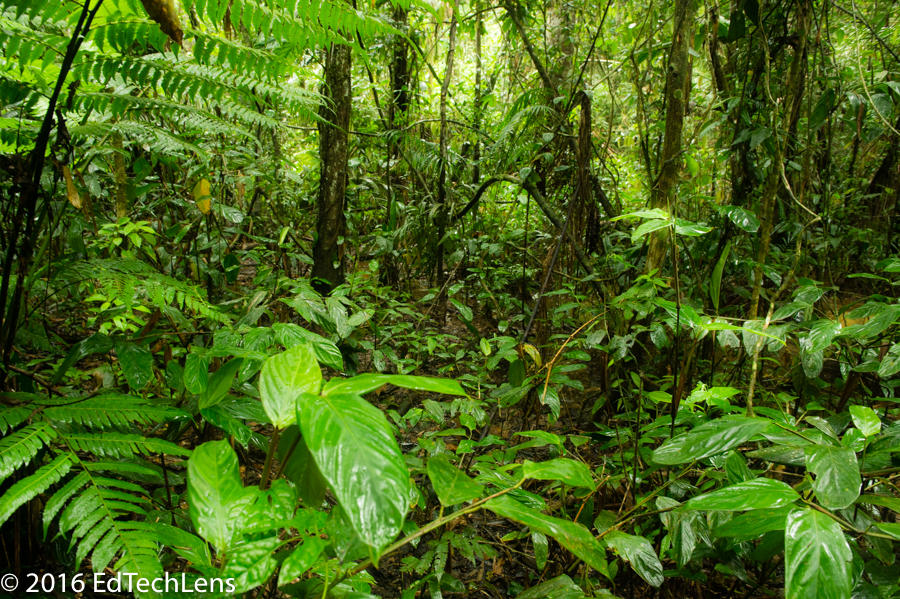The climate of the tropical rainforest is hot, often humid, and can be very wet. It is important then that plants and trees be able to handle these challenges without getting sick, rotting, and dying.
The process in which plants and animals change in order to better survive in their environment is called adaptation. This ability to change is very important in understanding how the rainforest ecosystem has survived for so many years.
The process in which plants and animals change in order to better survive in their environment is called adaptation. This ability to change is very important in understanding how the rainforest ecosystem has survived for so many years.

Most rainforest leaves are very green and have a waxy kind of coating to them. Approximately 90 percent of rainforest plant leaves have what is called a "drip tip." The drip tip is the pointed end of the leaf. This tip, along with the waxy covering makes it easier for water to run off the leaves. This is very important as without these adaptations, algae would grow on the leaves. This in turn would make it more difficult for the plant to get the sunlight it needs.
Plants and their leaves have adapted in other ways too. Because competition for sunlight is always intense, plants arrange their leaves at different angles in order to get sunlight instead of shade.
But adaptation is not just found in the rainforest. Look around at the trees and plants near you and see how leaves, bark and flowers have adapted to the climate where you live.
Something to Think About: Why is adaptation important for plants in the rainforest?
Plants and their leaves have adapted in other ways too. Because competition for sunlight is always intense, plants arrange their leaves at different angles in order to get sunlight instead of shade.
But adaptation is not just found in the rainforest. Look around at the trees and plants near you and see how leaves, bark and flowers have adapted to the climate where you live.
Something to Think About: Why is adaptation important for plants in the rainforest?
Want to Learn More? Visit BBC Bitesize pages on the rainforest or this geography page from Rainforest Australia to see how adaptation works with plants.
Rainforest Kids Science Curriculum Connection: Unit 2, Chapter 1; Lesson 4: Grades K-5 and Unit 4: Chapter 1; Lessons 1-3; Grades K-5

